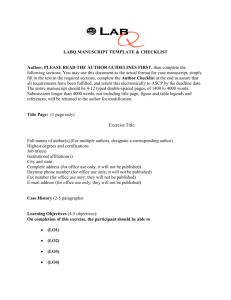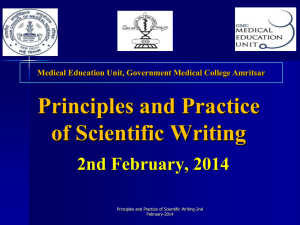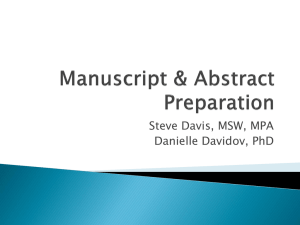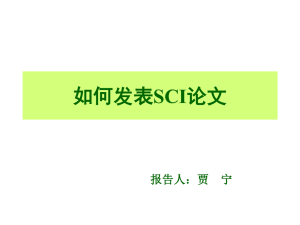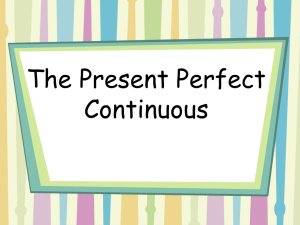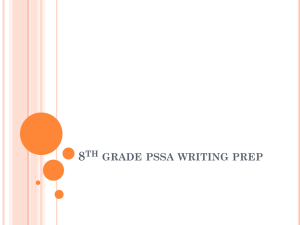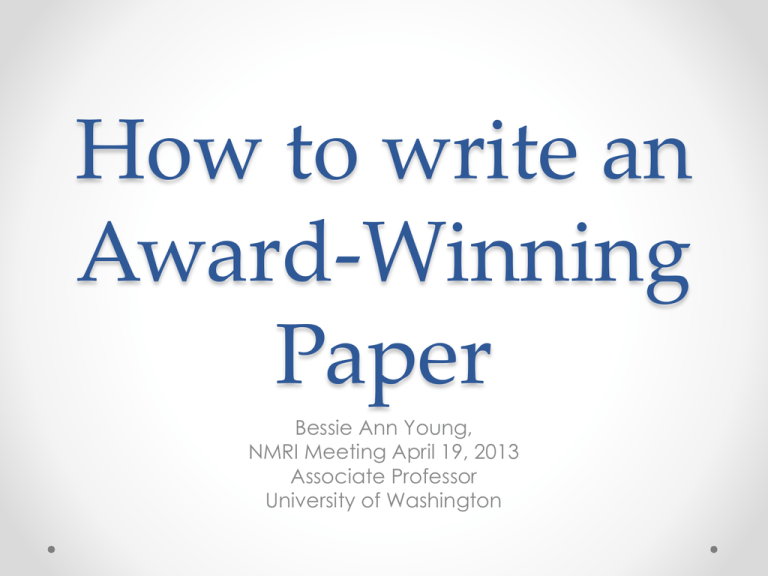
How to write an
Award-Winning
Paper
Bessie Ann Young,
NMRI Meeting April 19, 2013
Associate Professor
University of Washington
Outline of Talk
• Why are papers important in academia?
• Why should you write up your results
• What constitutes the basic outline for a great
paper?
• Abstract
• Introduction
• Methods
• Results
• Discussion
• Conclusions
Why are papers important
in academia?
• Manuscripts are the “Coin of the Realm”
• It allows people to see how you think and how you
write
• Publishing is necessary to stay in academics
• Papers are necessary for promotion
o If you don’t want to be promoted, don’t write any papers!
• Number of papers needed varies depending on
your track
o Clinician educators may not need as many and can do more reviews
o Physician scientists need as many as possible and they need to be in
good journals with high impact factors.
Why should you write up
your results
• If you don’t write up your results, either your mentor
or someone else in your group will
o or your competitor
• It is a sign of productivity and accomplishment.
• If your results are not written up and published, it is
as if the study was never done.
• It is important for your own sense of
accomplishment to write up your results.
• Publishing is important for grants, getting an
academic position, and promotion.
What constitutes the basic
outline for a great paper?
• IMRaD: Introduction, Methods, Results and Discussion
•
•
•
•
•
•
•
Or AIMRad
Abstract
Introduction
Methods
Results
Discussion
Conclusion
Abstract
• Sometimes the easiest to write, but sometimes the
most difficult piece of the paper
• Abstracts are written early for submission to
meetings
• Usually very structured
• Can write the initial abstract but should always
review after you have written the paper
• Results and conclusions in the abstract should be
exactly the same as those presented in the results
and conclusions sections.
o This is important because it may be the only part of the paper editors read
prior to make a decision regarding reviewing your paper!
Abstract
• Background/Rationale
o Why you are writing this paper and how does it contribute to the literature
• Methods/materials
o Clinical research-study design, populations, statistical methods used
o Basic research- study design, animal vs cell culture vs other
• Results
o Concise and most important results
o What should readers take away from this paper?
• Summary
o May or may not need to include in the abstract
• Conclusion
o Tell your audience why this piece of work is important!
Common Mistakes
• Abstract is too long it should be approximately
250 words
• Using a meeting abstract for the manuscript
o Revise the manuscript abstract accordingly
• Abstract is unnecessarily complicated
• Remember: The abstract is a general summary of
your manuscript!
• Browner, Publishing and Presenting
Clinical Research
Introduction: Why
• Usually 3 paragraphs
o Background and holes in the literature2 paragraphs
o One paragraph to describe why you did your study and tentatively what
you found
• Briefly describe the problem and gap in the
literature
o Don’t describe all of the background literature here
• Hypothesis, aim or goal: clearly describe what your
hypothesis is and how this adds to the literature
• Describe what you did and what question you
answered with your study.
Checklist for the
Introduction
• Are the four major elements present
o
o
o
o
Background
Existing research
Problems with that research
Your improvements
• After reading your abstract, could someone not familiar
with the field be able to describe why your study was
done and how your study will improve on existing
knowledge?
• Use an objective tone when criticizing prior work?
o They may be your reviewers!
• Does your study describe how it addresses previous gaps
in the literature?
• W.Browner
Methods: Who, What,
Where and How
Clinical Epidemiology or Health Services Paper
• Population/subjects: describe who was in your study
• Describe what type of study you conducted
o
o
Prospective, randomized controlled trial, cohort study, cross over study
Cross sectional, longitudinal study
o
Exposure of interest, age, sex, race
o
Age, sex, race, other
o
o
o
o
o
o
Chi-squared for categorical variables
Student-t test for means of continuous variables
Logistic regression for a binary dichotomous outcome
Linear regression for continuous outcomes
Time to Event, survival or Cox models for survival
Randomized controlled trial, other studies
• What are your primary predictors
• What are your adjustment covariates?
• What is your primary outcome variable(s)
• Statistical Analysis
• IRB: include information on humans subject study approval
Materials and Methods:
Basic Research
• M/M include a descriptive summary of all materials
used and the methods for each experiment.
• Sections should be labeled or have sub-headings
possibly based on experiments
• May divide into experimental design and data
collection.
• One section should include animal guideline
compliance.
• All materials should have references to place of
origin.
• Experiments should be written such that someone
could reproduce your results if they wanted to.
Results: what you found
• The results section should contain results!
o No interpretations, no references to other work!
• Describe what you found and do not present
conclusions here.
• For clinical research:
o Table 1 should be your demographics of your study or characteristics of
study participants
o Additional tables may describe additional characteristics by exposure
variables or by the outcome
o Last paragraphs should describe all results from multivariable or other
statistical analyses.
o Add figures to clarify results
Results: what you found
• The results section should contain results!
o No interpretations, no references to other work!
• Describe what you found and do not present
conclusions here.
• For Basic research:
o Report all results.
o Include tables or graphs if it makes the data clearer
o Present original data gels, blots, histology
Discussion: interpretation
of the results
Clinical Epi or Health Services
• Describe briefly what you found in the first paragraph (1
paragraph).
• Compare your results to what is out there in the literature
(2-4 paragraphs).
o Do not present a complete literature review, but keep your comments
focused.
o Include relevant studies
• Mechanisms why do you think you found your specific
results?
• Limitations: list up front what the limitations of your study
are or else reviewers will do it for you.
o
o
o
o
Power
Limited number of variables
Cross-sectional data, not a randomized trial
May include strengths as well
Discussion: interpretation
of the results
Basic Research
• First paragraph should interpret findings and state
whether the hypothesis has been proven or
rejected.
• Further interpretation of results compared to the
existing literature
o Not a literature review
• Outline conclusions
o Can be a separate section of conclusions
• Outline where you as the researcher intend to go
next with your studies
Conclusions
• Outline all of your conclusions
• Briefly confirm what your study found
• How does your study compare to other studies in
the literature
• Where should the field go next?
• What studies do you plan next
o But don’t give too much away!
Acknowledgements
• Include people who helped you with the paper, but
may not have contributed enough to be an author.
• Make sure to include people on the paper who
should be included
• Each journal has criteria for authorship
o JAMA has detailed criteria for authorship
• Anyone acknowledged should be told
Title
•
•
•
•
•
Start with a draft title.
May want to finalize after the paper is written
Needs to be interesting but not too journalistic
There are several types of titles:
The Description
o How to write an award-winning Scientific Paper
• The Topic/Description
o Scientific Paper: How to write an award-winning one
• The Statement
o Writing an award-winning scientific paper is easy if you know how
• The Question
o How do you write an award-winning scientific paper?
References
• Use an reference library to do your literature review
and add references to your paper
• Examples are
o Reference manager (? Is it still around)
o Endnote-now with a web version you can use anywhere
• They come out with new versions every couple of years that require
you to learn how to use it again.
• Look at the journal you are going to submit your
paper to and change the references accordingly.
o Follow directions.
Bessie’s Rules
• Give yourself time to write the paper
o Block out time on your schedule
• Start with an outline of your sections and fill in the blanks
o IMRaD: Introduction, Methods, Results and Discussion
• Start with topic sentences for your outline and you have
already written a large section of the paper
• “Write the paper before you start the experiment”
o Write the introduction, methods, and parts of the discussion before you start
the experiment
• Write the paper as you do your experiments
• Write a little each day if possible
• Give your manuscript to your colleagues for feedback
and editing
• Give your mentor enough time to read the paper and
respond
Other Comments
• Writing well does not come easy to most people
• Read what you have written and revise before you
give it to other people to read.
• Make your sentences clear
• Shorter is better (most always)
• Use linking words:
o However, indeed, rather, moreover, on the other hand, by contrast, in
comparison, surprisingly, and consistent with…
• Use the correct verb tense in each manuscript
section
o Introduction present tense
o Methods and results past tense
o Discussion past tense for your results you just presented
Overcoming Writer’s
Block
• WB Inability to put thoughts about a project into
words
o Browner
Many people have writer’s block.
Approach systematically
Make a list of what needs to be accomplished
Assemble materials in a single folder or computer
file
• Set aside time every day to write (30minutes)
• Set a goal for each day Give yourself a deadline
• Write the easy sections first methods or results
•
•
•
•
Summary
• Manuscripts (and grants) are the academic currency;
we live and die by them.
• Scientific paper writing should follow a format/structure
that allows for ease of writing.
• Develop a strategy to allow yourself time for writing.
o Give yourself deadlines for portions of the paper
o Write sections of the paper
Give yourself adequate time to write the paper
Refer to references for style
Write up your results in a timely fashion.
If English is not your first language or you have difficulty
with grammar, get editorial help from native speakers
• Develop a thick skin
•
•
•
•
Books and Style Guides
Strunk and White, The Elements of Style
Day R, How to write and publish a scientific paper
Iverson, AMA Manuel of Style
Huth, Writing and Publishing in Medicine
The Economist, Style Guide
Sheen, Breathing Life Into Medical Writing: a
Handbook
• Browner W, Publishing and Presenting Clinical
Research
•
•
•
•
•
•
References
• Van Way, C. Writing a Scientific Paper. Nutrition in
Clinical Practice, 2007, 22:636-640.
• Alexandrov, A. How to Write a Research Paper.
Cerebrovasc Disease, 2004; 18:135-38.
• Pololi, Lz. Facilitating Scholarly Writing in Academic
Medicine, J Gen In Medicine, 2004;19:64-68.
Grammar…
• “I had to re-write your paper so that I could read it!”
o W. Couser
• Edward Good, A Grammar Book for You and I
(Oops, Me): All the Grammar You Need to Succeed
in Life
• “Procrastination behaviors can be attributed to a
fear that the manuscript will be rejected.”
• Browner

